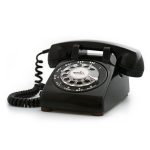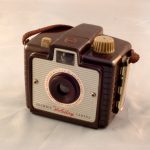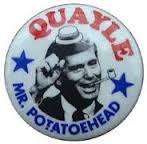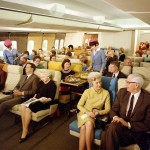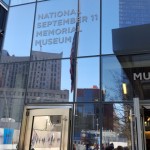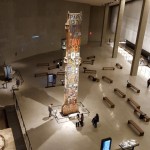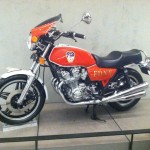By Suzanne Sparrow Watson
I had a hard time getting to sleep the night of the Dallas police shootings I kept thinking about 1968, and how the events of that seminal year affected our society for years to come. The next morning I heard several news commentators make the same comparison until someone (I forget who – I can remember 1968 but not last week) reminded us how bad 1968 really was. It was a year that began to show the fissures in our society and a seismic shift in our values. The Vietnam war was raging – both Mai Lai and the Tet Offensive occurred that year and we lost more men (16,592) in 1968 than any other year of the war. Martin Luther King and Bobby Kennedy were assassinated, we saw the demise of Lyndon Johnson and the rise of Richard Nixon, the Zodiac killer terrorized the San Francisco area, North Korea captured the submarine Pueblo and kept the 99 member crew hostage for eleven months. Finally, violent riots broke out at the Democratic convention in Chicago. It was a really bad year.
As easy as it is to think about 1968 in rather dark tones, that year was also jam-packed with social, economic and entertainment “firsts”. We here at From A Bird’s Eye View, in an effort to bring you some lighter memories of that year, bring you the following highlights:
- The Beatles started Apple records and released their White Album, containing the song Hey Jude.
- The Boing 747 made its maiden flight and Intel was founded.
- Dr. Christian Barnard performed the first heart transplant.
- The first ATM went into a bank in Pennsylvania and 911 became the nation-wide emergency number.
- The Graduate was the #1 movie, forever inspiring runaway brides.
- TV programs ran the gamut from Peyton Place to Flipper, but perhaps the most influential new TV show that year was Laugh-In.
- The average new car sold for $2822 and you could fill the tank for 34 cents a gallon.
- The median price of a home was $14,950, which sounds great by today’s standards but then the average annual salary was only $7,850.
- The Jets/Raiders game was interrupted by a showing of Heidi, cutting off the last minute of play where the Raiders scored twice to win the game.
- Perhaps this should be on the “bad” list, but 1968 saw the invention of the Big Mac.
- 60 Minutes debuted on CBS and is still going strong.
- Finally, on Christmas Eve 1968, Apollo 8 became the first manned spaceship to orbit the moon. As one politician noted when the astronauts safely returned to Earth, “You have saved 1968.”
I write this just as the political conventions are about to take place so I don’t know what will happen – hopefully just peaceful protesting. It’s hard not to be apprehensive; to hope that we don’t see rioting and injury. I will endeavor to remember that 1968 had problems, but it also had breakthroughs. After all, it was in 1968 that Paul Lynde entertained us on Hollywood Squares. Who knows, perhaps in 50 years we’ll look back at 2016 and despite the problems, we’ll remember the nuttiness of Pokemon Go.
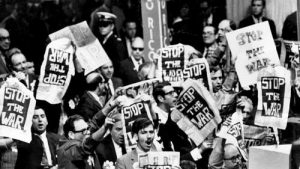










 We stood in our kitchen, wondering what the sound could have been, when my husband looked out the window and saw what appeared to be contrails in the sky. I captured it with my camera (picture right) and we surmised it was a plane of some sort that may have crashed. But when we turned on the news we discovered that Arizona had experienced an asteroid explosion! Now that’s something you don’t see every day. Sure enough, the sound we heard was a sonic boom when the asteroid fireball broke apart. Later in the day NASA officials confirmed that it was a small asteroid, about 10 feet in diameter, that had entered the Earth’s atmosphere near Payson, Arizona. They estimated that the object was moving at more than 40,000 mph when it sped across the sky. What everyone who was up early saw (and what I captured in my photo) was the smoke trail of the fireball – the winds of the upper atmosphere had caused the trail to twist and turn. I learned a lot about asteroids on Thursday, mainly that they happen all the time. They are considered to be “space debris,” or leftover fragments from the formation of the solar system. Kind of like the spare parts left over from the bed you bought at Ikea. There are millions of asteroids orbiting the sun, 750,000 of which are found in the asteroid belt located between the orbits of Mars and Jupiter. This week scientists have been scrambling to find the scattered bits of the asteroid so they can examine them more closely. Their fear is that amateurs with their metal-detectors will find them first and they’ll end up on someone’s nook so the finder can say at the next neighborhood BBQ, “Hey, want to come see my asteroid?”. In any event, these remnants tell scientists about the formation of the solar system so hopefully NASA will find them and we’ll know once and for all whether there are little green men on Mars.
We stood in our kitchen, wondering what the sound could have been, when my husband looked out the window and saw what appeared to be contrails in the sky. I captured it with my camera (picture right) and we surmised it was a plane of some sort that may have crashed. But when we turned on the news we discovered that Arizona had experienced an asteroid explosion! Now that’s something you don’t see every day. Sure enough, the sound we heard was a sonic boom when the asteroid fireball broke apart. Later in the day NASA officials confirmed that it was a small asteroid, about 10 feet in diameter, that had entered the Earth’s atmosphere near Payson, Arizona. They estimated that the object was moving at more than 40,000 mph when it sped across the sky. What everyone who was up early saw (and what I captured in my photo) was the smoke trail of the fireball – the winds of the upper atmosphere had caused the trail to twist and turn. I learned a lot about asteroids on Thursday, mainly that they happen all the time. They are considered to be “space debris,” or leftover fragments from the formation of the solar system. Kind of like the spare parts left over from the bed you bought at Ikea. There are millions of asteroids orbiting the sun, 750,000 of which are found in the asteroid belt located between the orbits of Mars and Jupiter. This week scientists have been scrambling to find the scattered bits of the asteroid so they can examine them more closely. Their fear is that amateurs with their metal-detectors will find them first and they’ll end up on someone’s nook so the finder can say at the next neighborhood BBQ, “Hey, want to come see my asteroid?”. In any event, these remnants tell scientists about the formation of the solar system so hopefully NASA will find them and we’ll know once and for all whether there are little green men on Mars.
